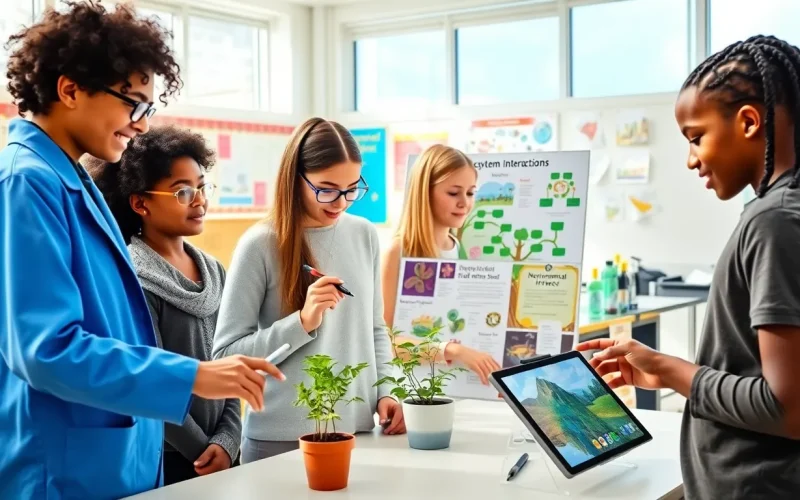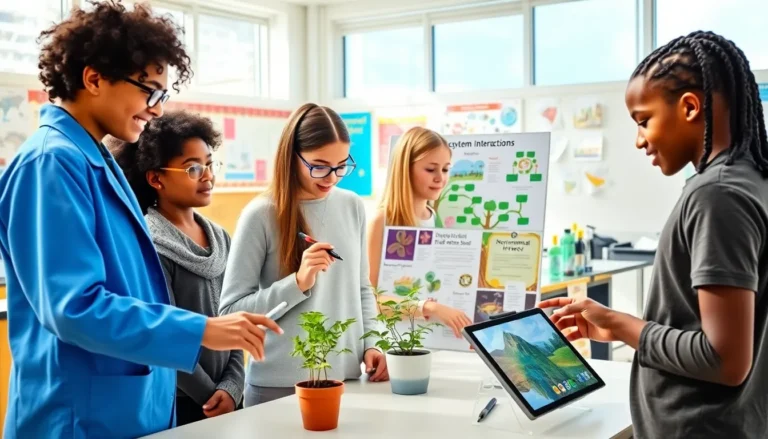Table of Contents
ToggleIntegrated science is an emerging paradigm that combines multiple scientific disciplines into a cohesive framework. This approach not only enhances understanding but also prepares students to tackle complex real-world problems. Redwebzine, a leading platform in this educational shift, effectively illustrates integrated science’s principles through innovative projects and collaborative efforts. This article explores the concept of integrated science, its importance, key components, Redwebzine’s unique approach, its societal impact, and the challenges that lie ahead.
What Is Integrated Science?

Integrated science refers to the blending of various scientific disciplines, such as biology, chemistry, physics, and earth sciences, into an interconnected approach. This educational framework promotes a holistic understanding of scientific concepts, moving away from traditional isolated teaching methods. By emphasizing interrelationships among different fields of study, integrated science enables learners to see the bigger picture and apply their knowledge to solve multifaceted problems.
In educational settings, integrated science is often applied through project-based learning, real-world applications, and collaborative initiatives. For instance, a project on climate change might incorporate atmospheric science, biology, and chemistry, allowing students to explore the implications from multiple perspectives. This approach not only deepens comprehension but also fosters critical thinking and problem-solving skills essential for future scientific endeavors.
The Importance of Integrated Science
The importance of integrated science cannot be overstated in today’s rapidly evolving world. Firstly, it aligns with the increasing complexity of global issues, where scientific challenges often intersect multiple fields, from environmental conservation to medical advancements. For instance, understanding the impacts of pollution requires insights from chemistry, biology, and environmental science.
Also, integrated science education encourages collaborative skills, which are critical for professional success. By working on interdisciplinary teams during their studies, students learn to communicate across specialties, fostering teamwork and enhancing creativity.
Finally, integrated science prepares students for careers that require a comprehensive skill set. As industries seek employees who can think critically and tackle problems creatively across various domains, an integrated scientific approach equips learners with versatile knowledge and competencies.
Key Components of Integrated Science
Several core components define integrated science, facilitating its application in educational settings:
- Interdisciplinary Learning: This foundation merges different scientific disciplines, allowing students to apply concepts from one area to another, for example, using physics principles to understand biological organisms’ locomotion.
- Real-World Applications: Integrated science typically emphasizes practical applications. Students engage in hands-on experiences that reflect real-world challenges, such as sustainable development projects that incorporate ecological, chemical, and societal perspectives.
- Collaborative Projects: Group work and collaborative problem-solving scenarios are crucial, fostering a team-oriented learning environment. This structure mimics actual scientific research processes, where collaboration among specialists is common.
- Inquiry-Based Learning: This approach encourages curiosity and exploration, enabling learners to ask questions, form hypotheses, and conduct experiments across scientific disciplines, so deepening their understanding of scientific inquiry.
Redwebzine’s Approach to Integrated Science
Redwebzine stands at the forefront of the integrated science movement, employing innovative methods to enrich scientific education.
Innovative Projects and Research Initiatives
Redwebzine encourages a range of innovative projects that push the boundaries of traditional science education. These projects often incorporate technology, allowing students to engage in virtual simulations or field studies. For example, a project might explore the impact of local water quality on ecosystems, merging biology, chemistry, and environmental science.
Collaborative Learning Strategies
Besides, Redwebzine fosters collaborative learning strategies where students and educators work together to design curriculum pathways. By leveraging the expertise of both educators and industry professionals, Redwebzine cultivates an environment rich in diverse ideas and resources that enhance learning outcomes.
Impact on Education and Society
The impact of integrated science extends beyond classrooms and into society. By fostering a scientifically literate population, integrated science cultivates informed citizens who can engage thoughtfully in discussions about pressing issues like climate change, biotechnology, and public health.
In educational settings, the integrated science framework improves student engagement and motivation. Learners often show greater enthusiasm for subjects that connect to their interests and real-world applications, leading to higher retention rates and academic performance.
Also, integrated science empowers marginalized communities by providing equitable access to quality science education. Programs designed around integrated science principles often target underserved populations, ensuring they have the knowledge and skill sets necessary to navigate and influence a rapidly changing world.
Challenges and Future Directions
Even though its advantages, integrated science faces several challenges. Educators may struggle with curriculum constraints that favor traditional subject boundaries, making integration more difficult. Also, professional development is crucial for teachers to feel confident in delivering interdisciplinary lessons, which often require new pedagogical approaches.
Looking forward, the future of integrated science holds promising prospects. Advances in technology can help integration, with online platforms providing resources and collaborative tools that reach beyond geographic limitations. Schools and educational institutions are beginning to recognize the value of this approach, leading to a gradual shift in curricular design and teaching methodologies.
As integrated science continues to develop, it will likely inspire new curricula that better prepare students for the complexities of the modern world, eventually leading to more robust scientific inquiry and innovation.
Conclusion
Summarizing, integrated science represents a vital shift in educational approaches, fostering a deeper understanding of complex global challenges. Platforms like Redwebzine exemplify how innovative projects and collaborative learning strategies can enhance scientific education. By breaking down traditional disciplinary barriers, integrated science not only equips students with critical thinking skills but also prepares them for effective participation in an increasingly interconnected world. The ongoing development of integrated science, even though its challenges, promises a brighter, more informed future for education and society.





